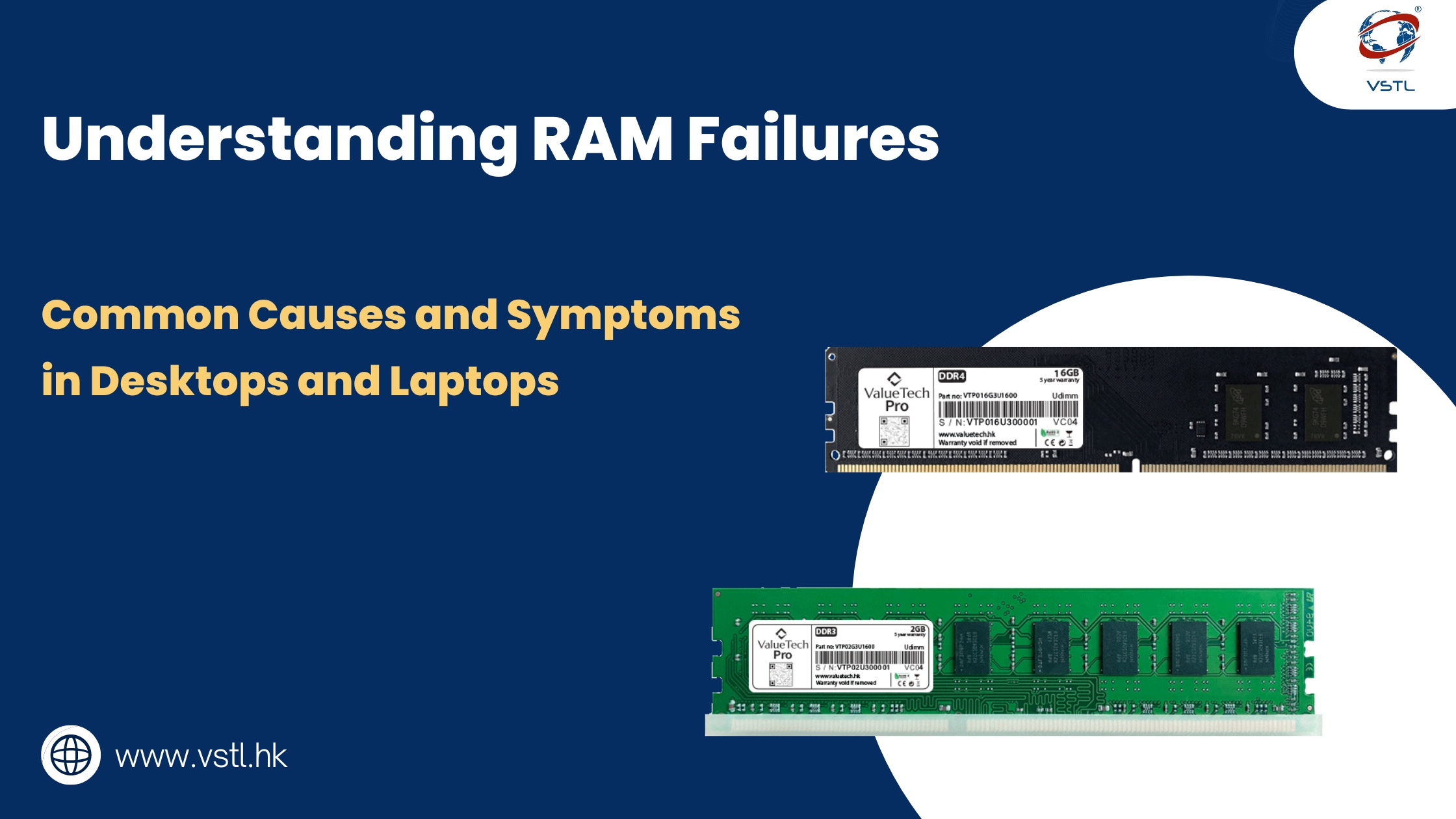
Your computer’s Random Access Memory (RAM) is like short-term memory. RAM helps your computer work well. It stores data that your CPU needs fast. But RAM can fail sometimes. Your computer might get slow or crash. This blog post tells you the causes and signs of RAM failures in desktops and laptops. It also shows you how to identify and fix these RAM issues.
What is RAM?
RAM is a computer memory that stores data when your computer is on. It’s faster than hard drives or SSDs but loses data when power goes off. Let’s learn about RAM failures. RAM keeps the info you need while using apps or programs. But sometimes RAM can have issues or stop working right. We call these “RAM failures”. RAM failures can cause weird problems on your computer. Apps may crash, freeze, or act strange. Your computer may be slow or freeze completely. To fix RAM failures, you may need to replace the bad RAM or get a new one.
When you start a program or open a file, it is loaded into the RAM. The CPU can then access it fast. More RAM means your computer can run more programs at the same time without slowing down. RAM is a useful computer part. It helps your machine work smoothly. Having more RAM is better. Your computer can handle more tasks with ease.
Common Causes of RAM Failures
Overheating: Too much heat can harm RAM. Ram is an electronic part. It can get too hot if the cooling system in the computer is not working well. Overheating can make RAM unstable. Then it stops working right.
Physical Damage: Physical damage is also bad for RAM. If you drop your laptop or handle your desktop computer roughly, the RAM chips may break. Even a small crack or bend in the RAM stick can make it fail.
Electrostatic Discharge (ESD): Static electricity can ruin RAM too. This is called electrostatic discharge(ESD). When you install new RAM sticks without proper grounding, the static can zap them. Then the RAM won’t work properly anymore.
Manufacturing Defects: Sometimes, RAM modules have problems from the factory. You may not see these issues at first. But over time, they can cause RAM to stop working.
Aging: RAM gets older like other computer parts. As RAM ages, it can break down and not work as well. Older RAM has more chances to fail.
Symptoms of RAM Failures
Frequent System Crashes: Your computer shuts down randomly. Sometimes it freezes too. This happens often when using many programs at once. Faulty RAM (memory) causes these crashes.
Blue Screen of Death (BSOD): When your RAM has problems, your computer turns blue. The “Blue Screen of Death” shows error messages. “MEMORY MANAGEMENT” and “PAGE FAULT IN NONPAGED AREA” errors mean the RAM is bad.
Random Reboots: Your computer restarts all of a sudden without any warning or error message popping up. This could mean there’s an issue with your computer’s RAM (Random Access Memory). RAM problems often lead to random reboots because they interrupt how your operating system normally works.
Application Errors: Sometimes apps crash or show error messages. This also can happen if there’s a RAM failure. So if apps you use keep crashing or having errors a lot, it might be the RAM that’s the problem.
Slow Performance: Performance getting slower over time, Even if you didn’t change any software or hardware, sluggish performance could mean faulty RAM. Other causes like a full hard drive or fragmented files exist. But if your computer’s just getting noticeably slower for no clear reason, RAM issues may be why.
How to Diagnose RAM Failures
Memtest86 : Memtest86 checks memory errors, done by running tests on RAM. Free download, boot from USB/CD to scan for issues. A helpful tool to find RAM problems.For Windows PCs, there’s a built-in utility.
Windows Memory Diagnostic: Windows Memory Diagnostic in the Start Menu, follow instructions to run a memory test and detect any faults.
Reseating RAM Modules: Reseating RAM sticks can fix issues too. Power off the PC, open case, take out RAM modules carefully and re-insert them one-by-one to ensure proper connectivity.
Testing Individual Modules: If you have multiple RAM modules installed, you can try testing them individually to identify which module is causing the problem. Remove all but one RAM module and see if the issue persists. If the problem disappears, the removed module may be faulty.
Checking System Logs: Reviewing system logs and error messages can also provide clues about potential RAM failures. Look for recurring errors or warnings related to memory issues in the Event Viewer or other system monitoring tools.
Conclusion:
RAM failures can be frustrating and disruptive, but with the right knowledge and tools, they can be diagnosed and resolved effectively. By understanding the common causes and symptoms of RAM failures in desktops and laptops, you can take proactive steps to maintain the health and performance of your computer’s memory. Whether it’s addressing overheating issues, handling RAM modules with care, or using diagnostic tools to identify problems, being proactive about RAM maintenance can help ensure a smooth and reliable computing experience.
Remember, if you’re unsure about diagnosing or fixing RAM issues yourself, it’s always best to seek professional assistance from a qualified computer technician.
